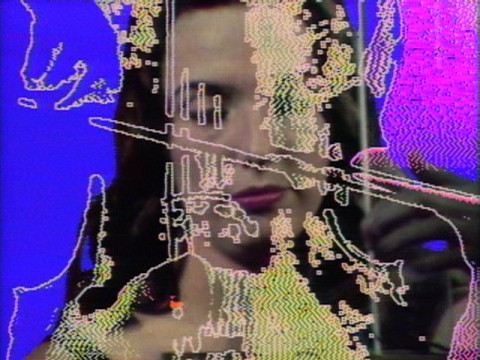Nam June Paik, widely considered "The Father of Video Art," was born in 1932 in Seoul, Korea. He studied music and art history at the University of Tokyo, where he received a BA in aesthetics. Although he was on a path to become a composer, his involvement in the Fluxus art movement in the early 1960s led to him to become a world-renowned video installation artist, who also created paintings, works on paper, performances, laser projections, robots, and numerous publications over the course of five decades. Several international museums have organized retrospectives of his work, and his work has also appeared multiple times in important group exhibitions, such as the São Paulo Biennale, Whitney Biennial, Documenta, and Venice Biennale. Paik died in Miami, Florida in 2006.
Following his graduation in 1956, Paik travelled to Germany to study classical piano and composition for several years. There he also met artists John Cage and Marcel Duchamp, whose work became major influences for Paik as he became interested in avant-garde performance art. After participating in the 1963 Fluxus International Festival of Very New Music in Weisbaden, Germany, Paik traveled to the United States the next year and settled in New York City, where he became a pioneer of video art.
Paik was the first artist to use the original portable video-recorder, the Sony Portapak, in 1965, and created the earliest known color video synthesizer with the engineer Shuya Abe in 1969. These activities developed from his primary interest in television, the medium Paik incorporated into almost all of his works in various, creative ways. He experimented with television sets as art objects and filled them with goldfish or candles, stacked and scattered them to create large-scale spirals, towers or environments, and incorporated them in garments and musical instruments. Alternately, he would use the television medium as art by distorting it with colorizing, video feedback, magnetic scan modulation, and non-linear mixing to generate a unique style of imagery.
Paik was also known for his many collaborations, particularly his performances with the late cellist Charlotte Moorman. Perhaps his most famous piece with Moorman is _TV Bra for Living Sculpture_ (1969), in which she played the cello in the Howard Wise Gallery while wearing a brassiere Paik made from two small television sets that covered her breasts. Paik connected the televisions to the cello and a closed caption camera in the gallery space to visualize the sounds Moorman played and capture her audience. Paik continued to merge art, performance, and technology in a surprising and humorous yet intelligent manner, in his celebrated video _Global Groove_ (1973).
The 28-minute video debuted on WNET, New York City’s public television station, in January 1974. It is a visual collage of cross-cultural expression presented in layered, hallucinatory imagery and edited in fast, abrupt style, much like the MTV music videos that would appear years later. Also prophetic is the line spoken at the opening of _Global Groove_, which is “a glimpse of a video landscape of tomorrow when you will be able to switch to any TV station on the earth, and TV Guide will be as fat as the Manhattan telephone book.” The program that follows exemplifies the free flow of video information for which Paik had always hoped. He envisioned a collapse of the nationalist barriers of TV culture, one that would allow for far-reaching, culturally diverse broadcasts on a global scale.
Accordingly, _Global Groove_ consists of a series of performances by dancers, artists and musicians of various backgrounds, accompanied by a diverse soundtrack comprising chants, popular songs, and traditional music. Paik mixed footage of Moorman, John Cage, Allen Ginsberg, and traditional Korean and Navajo musicians with imagery of tap, burlesque and Nigerian ceremonial dancers, to name a few. He also incorporated non-artistic fare, such as a Japanese Coke commercial and U.S. news broadcast of President Nixon. The majority of the scenes appear psychedelic, as Paik visually augmented them with technological manipulations that were innovative at the time. By doing so, Paik figured TV as a potentially creative and ultimately democratic tool, one that enables the viewer to experience new ideas, foreign expressions and international realities. _—Kanitra Fletcher_

